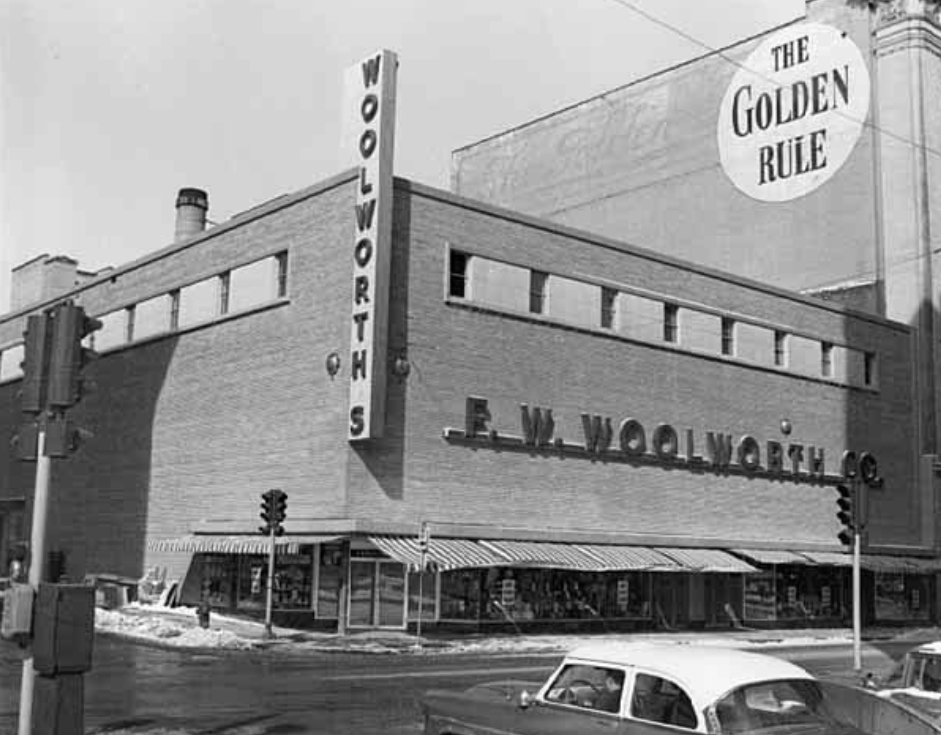
Elsewhere on the blog, there’s a pretty good debate about the suburban design principles of sameness that have transformed South Washington Avenue in Minneapolis from its surface lot-and-liquor-store past.
Developers in downtown St. Paul take a somewhat different approach to diversity in architecture and design, converting old buildings to new uses, each with its own design personality that doesn’t scream, “Hey, it’s better than nothing.”
It’s not, for example, a sin in St. Paul to incorporate the past with the present. The 1916 Foot-Schulze Co. shoe factory, now the Rossmor lofts building, has anchored a renaissance of street-level retail with the aid of the Penfield, a relatively new condo building that incorporated pieces of the old St. Paul Police headquarters.
A Lund’s has made retail on the street the norm. Good design can do that.
Down the street, the old St. Paul Post Office was converted — somehow — into apartments and a hotel. The most beautiful building downtown — the old Pioneer Press building — is now apartments and a celebration of its own history.

The former Dayton’s is now a hockey rink and retail complex, its 1960s-era facade mercifully removed from Wabasha Street downtown.
And Lowertown has maintained its railroad-and-lumber-baron personality as developers have discovered the area since the building of CHS Field, whose designers thankfully resisted the temptation to develop a 19th century-styled baseball park on the site of an old factory. The building has curves!
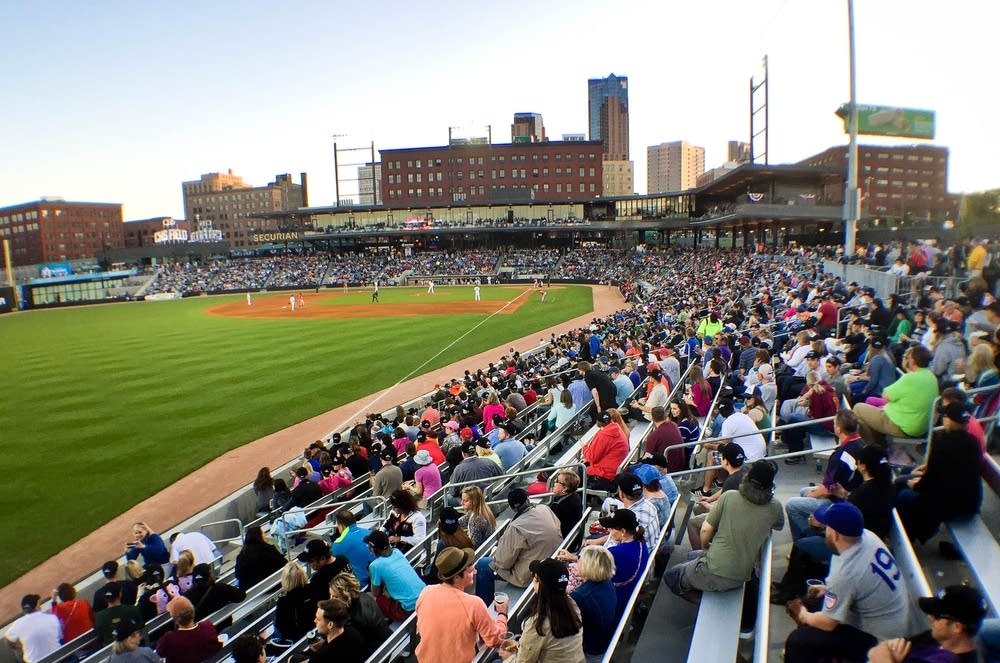
St. Paul gets it.
Navigating the new with the old is a design challenge but the newest addition to the St. Paul streetscape has faithfully lived up to it.
It’s this old building…
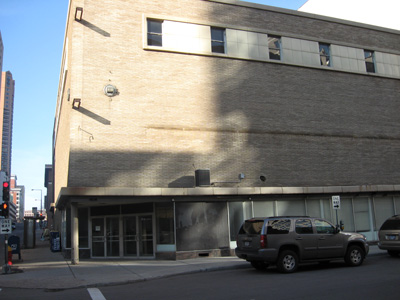
… which has now become this one.
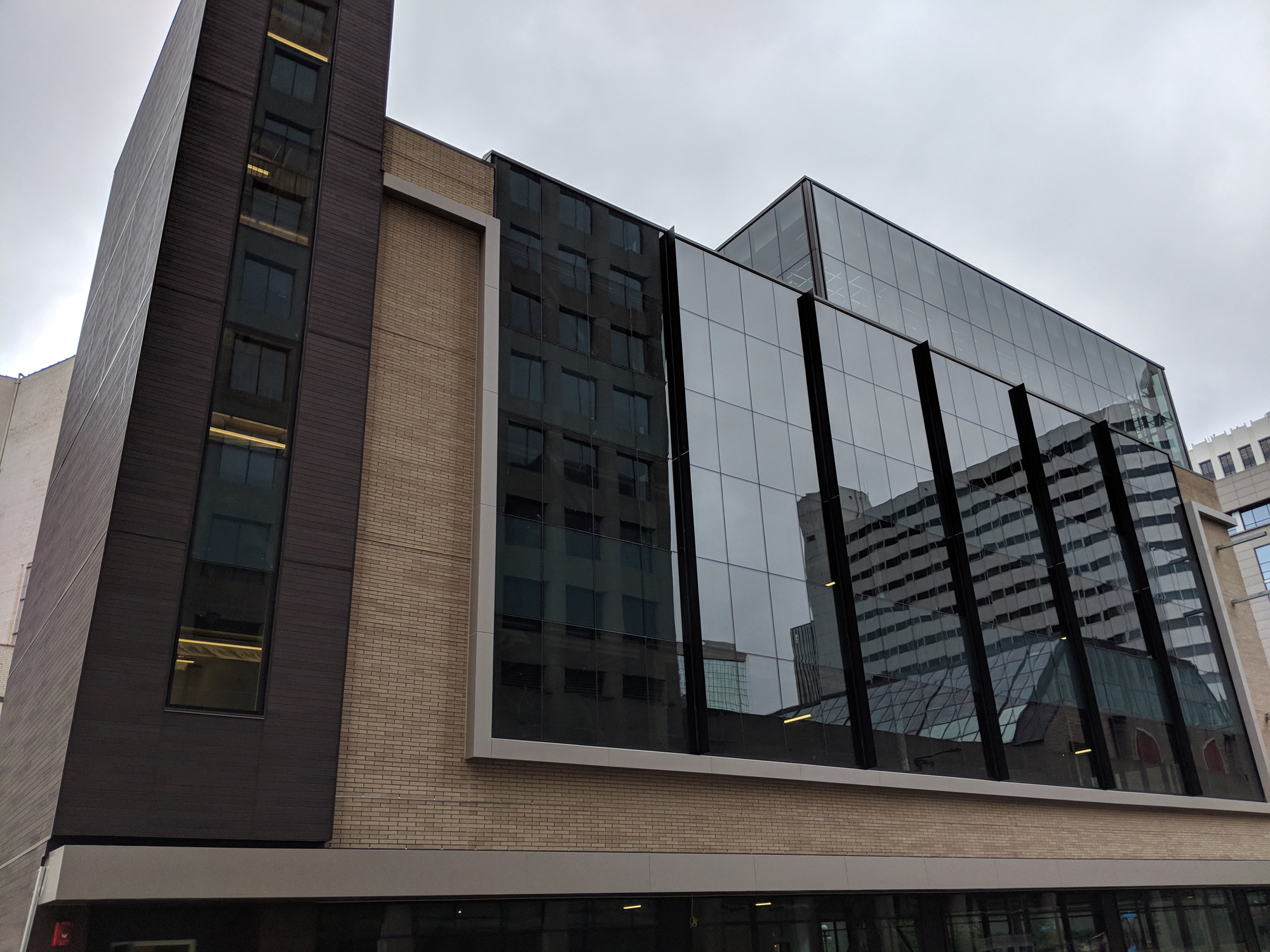
The old Woolworth’s building closed in 1993 and sat empty for more than 20 years until a developer saw the potential. It might’ve been easier to knock it down, but then you don’t get to consider the design sensibility of history.
The expanded building kept the original brickwork color and style (the old bricks were given away as keepsakes), which evoked Woolworth’s all over America in its heyday.
The door was open today, long enough for me to discover this on the floor in the foyer before I was kicked out.

From every angle, the building looks different, no small feat considering it is essentially a box. From each, however, it’s also clear that it was intended to honor its neighbors, not rising above them.
It might well be mere coincidence that the coloring on the stonework matches that of the window frames of the next-door Golden Rule Building, which was built in 1900. But I doubt it.
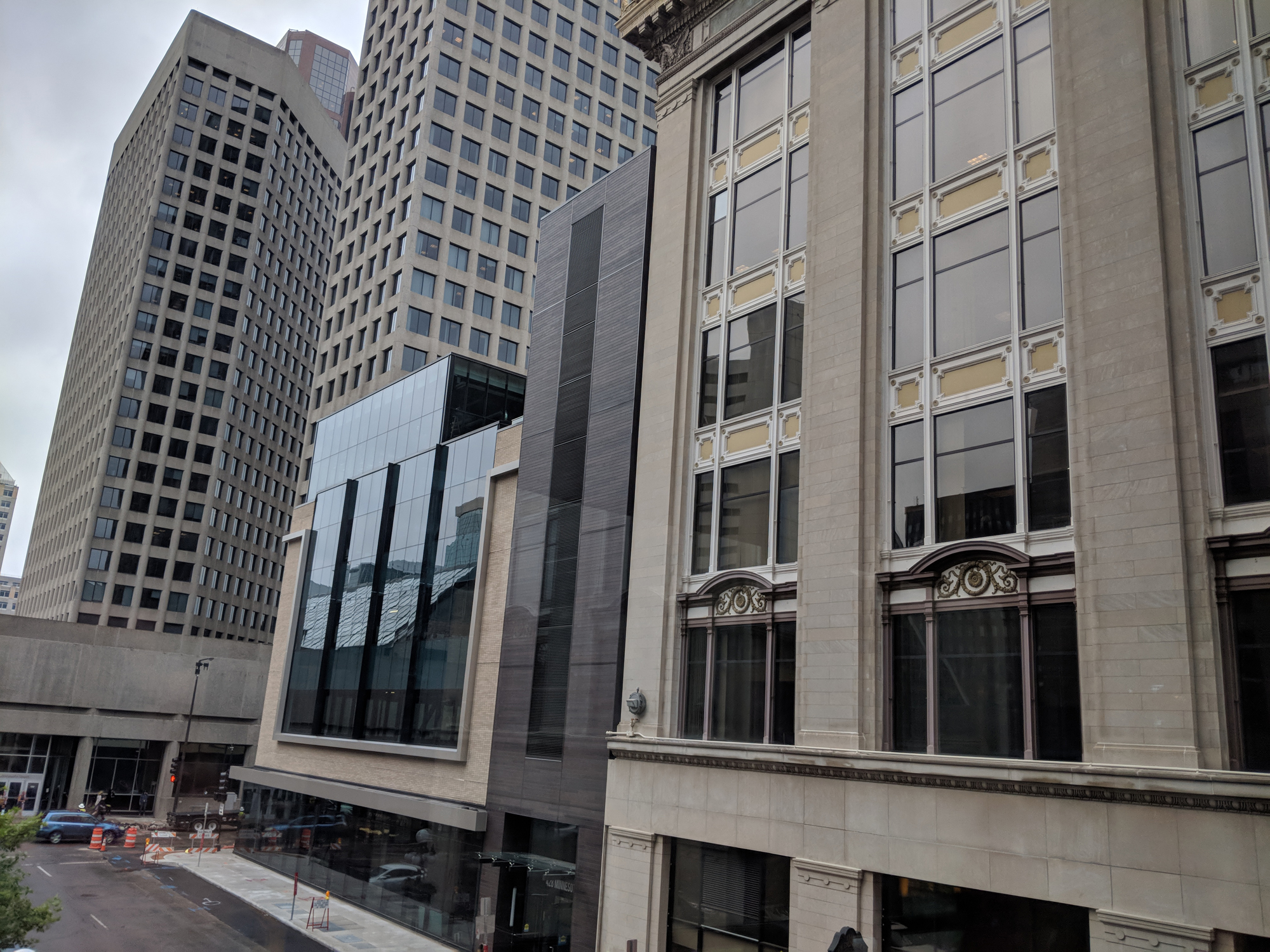
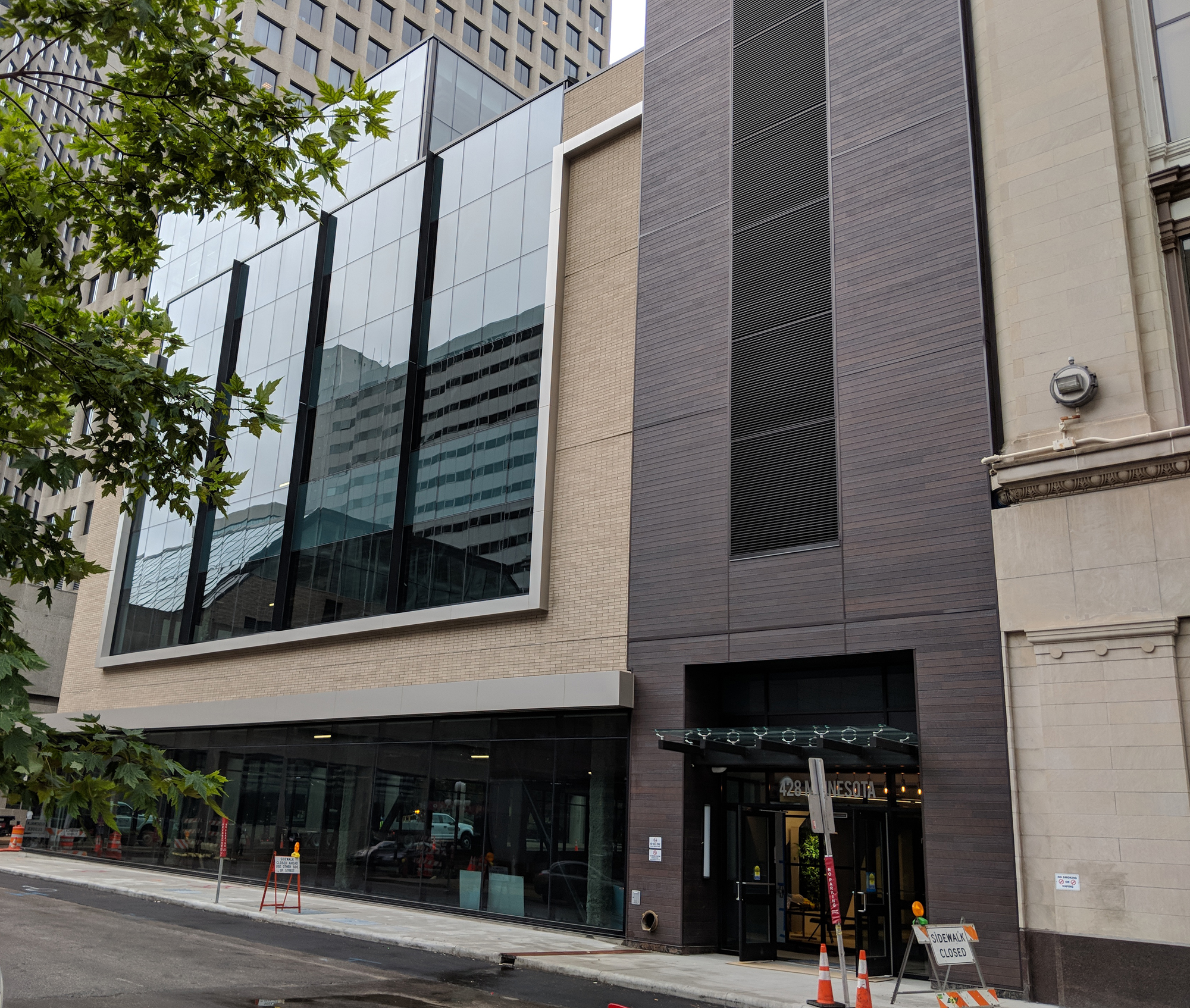
The building, now known as The 428, will hang a vertical sign on the southwest corner, the same spot where the Woolworth’s sign once hung.
From the looks of things, developers are going to give the possibility of street-level retail a go. That hasn’t worked anywhere in the nearby area so far.

There’s only so much good design can do for a neighborhood, of course. The new building still sits in the considerable shadow of a behemoth across the street.
It remains a St. Paul curse that when a raccoon garnered international attention for the city, it chose an architectural insult to climb.
The building isn’t expected to open until next month.
